The Observatories of the Instituto de Astrofísica de Canarias -the Teide Observatory in Izaña (Tenerife), and the Roque de los Muchachos Observatory, in Garafía (La Palma)- are situated at two of the most privileged sites for astronomical observation. The contemporary history of astronomy in the Canaries started with the astronomical expeditions of the XIX century-A description of these campaigns by Prof. F. Sanchez can be found in “Vistas in Astronomy" (1985).
Piazzi Smyth 1856
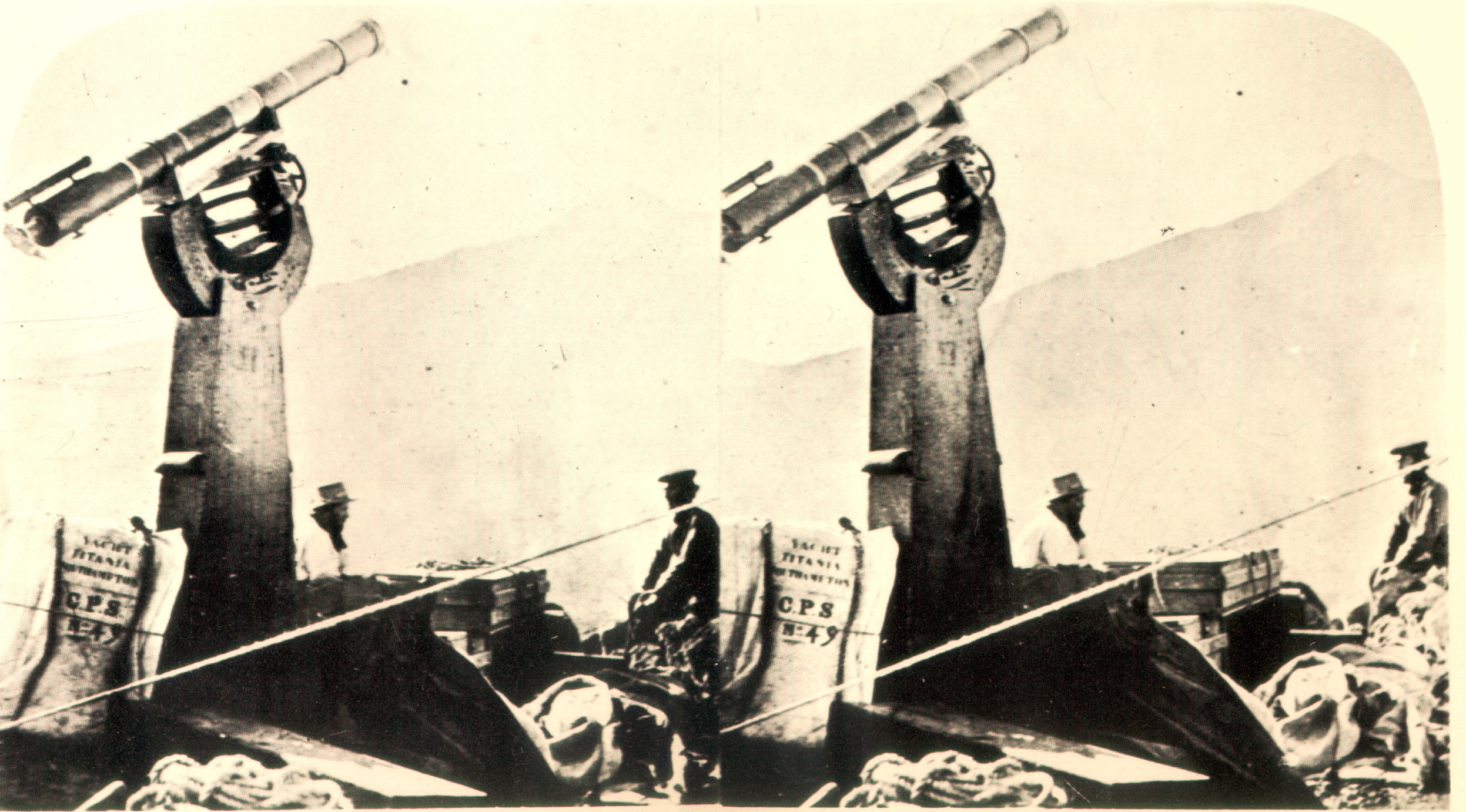
The British astronomer Piazzi Smyth showed for the first time that high altitude sites provide clear advantages for astronomical observing. He reached this conclusion after observing from different heights in Tenerife, from sea level to the Guajara mountain (2,717 m) and Altavista (3,250m) close the peak of Teide.
Jean Mascart, 1910
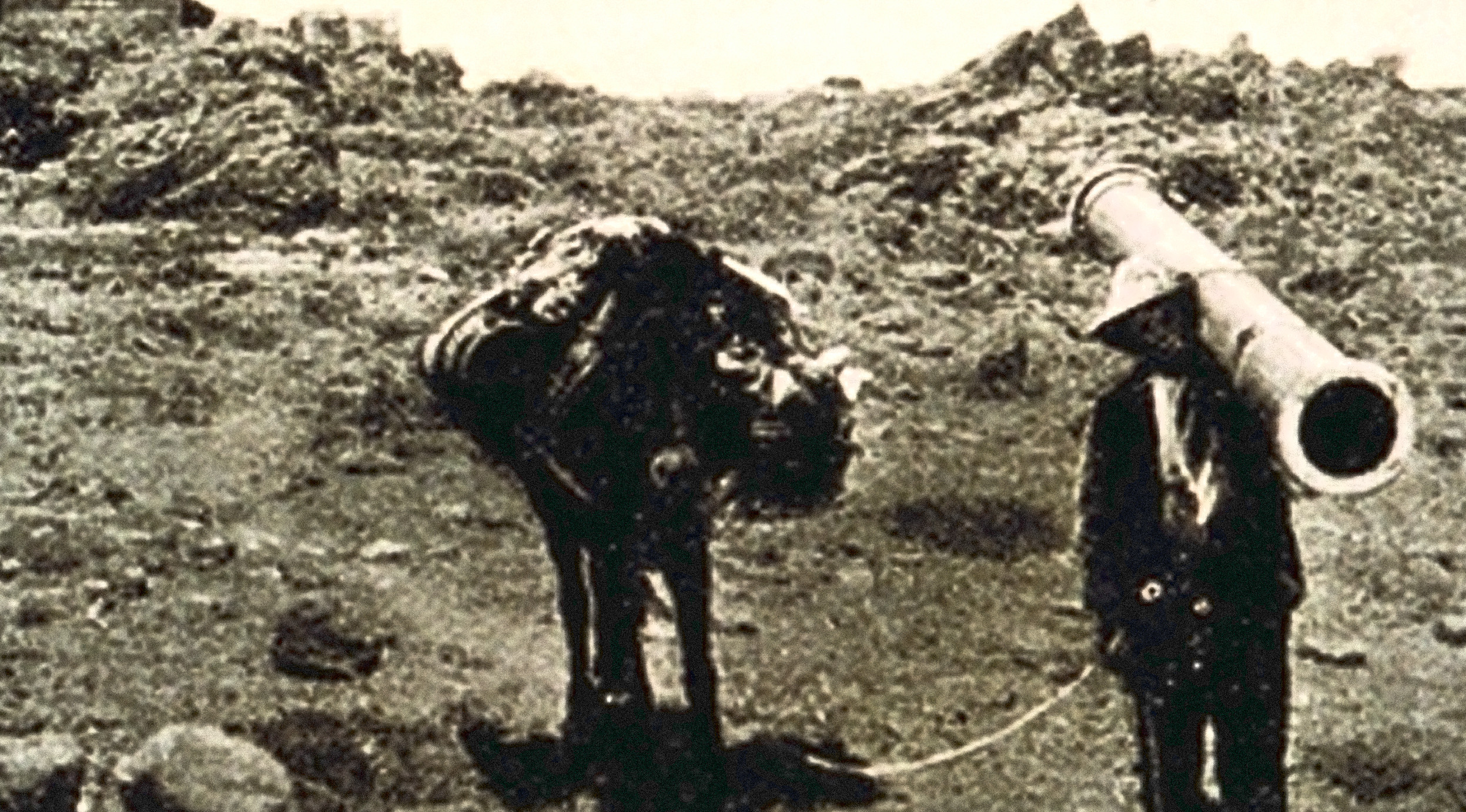
In that year the French astronomer Jean Mascart came to the Canaries with the purpose of observing the approach of Halley’s comet. Mascart was so satisfied with the conditions for astronomical observation on the mountains of Tenerife, that he proposed the setting up of an international observatory on Guajara mountain.
Solar eclipse, 1959
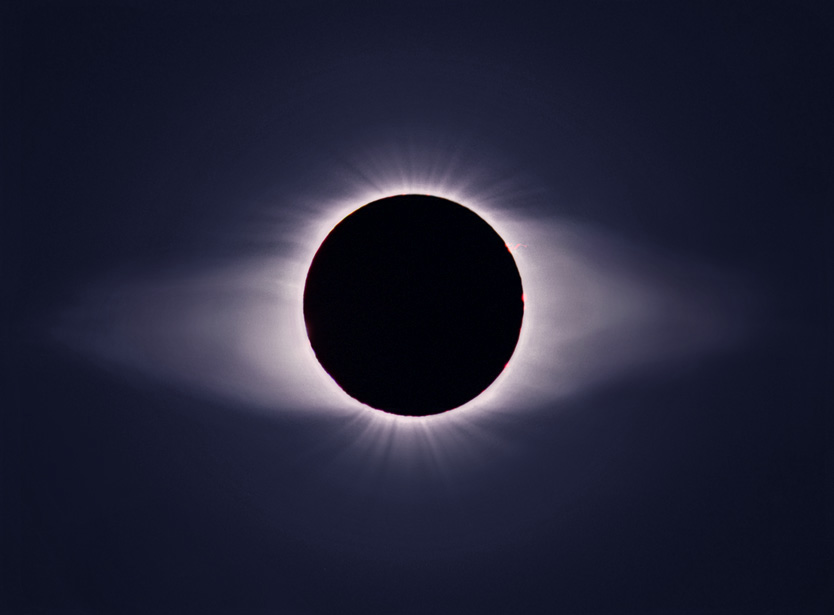
Many astronomers from around the world visited the islands to observe a solar eclipse. This renewed the interest in establishing a permanent observatory. Scientists from the CSIC (A. Romañá) and from the University of Madrid (J.M. Torroja) pushed the idea in Spain and studies were initiated of the astronomical conditions in the region of Izaña. In that year the Teide Observatory was officially created, and this later came under the responsibility of the Rectorate of the University of La Laguna
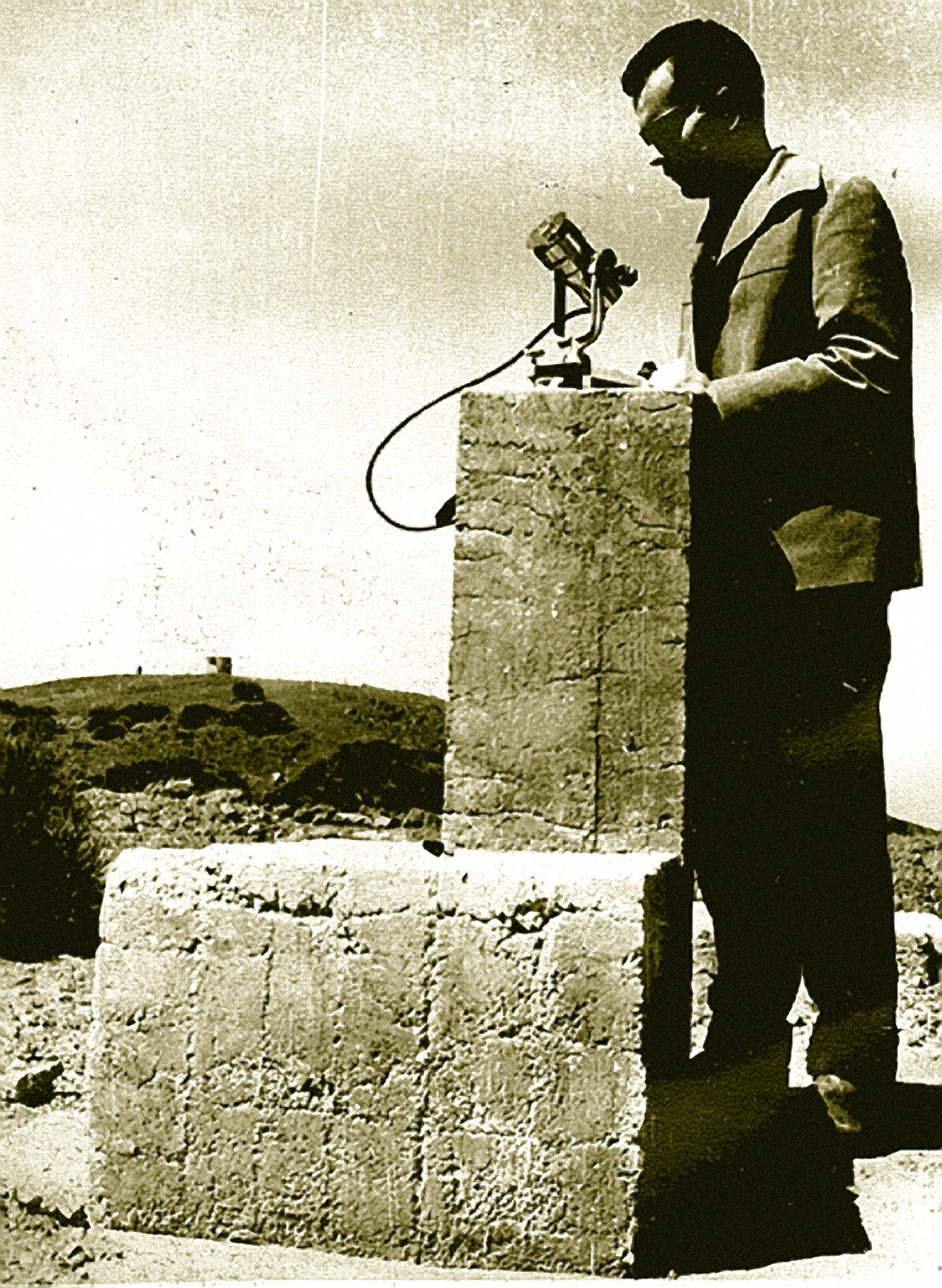
In 1961 Francisco Sánchez, the founder-director of the IAC, arrived in the Canaries with a clear objective, to study the astronomical quality of the mountain tops of Tenerife. He had previously established the parameters and measurement methods which were needed for this study. The 60’s was the decade of Spanish astronomical site testing, the first time this had been done in the Canary Islands. In 1964 the first professional telescope was installed at the Teide Observatory, a photopolarimetric telescope for night-time observations, from the University of Bordeaux (France), designed to study the zodiacal light (the light scattered by the interplanetary medium and visible from the tropics). With this the first astrophysical research group in the country (“Upper Atmosphere and Interplanetary Medium”) was formed the first doctoral theses were written and the first astrophysical articles and communications in Spain were produced.
After this telescope more were added as the years went by (in 1969 the first solar telescope was installed at the Teide Observatory) until the present major set of telescopes had been installed in the Canary Island Observatories. The installation of each telescope has always been preceded by the corresponding agreement, following the model established with the Bordeaux Telescope: sky in exchange for a telescope. In this way the prejudices of the European Astronomers about the conditions for astronomy in the Canaries were overcome, and the Spanish authorities (both local and national) began to understand that this “natural resource”, the Canary sky, could be exploited, and in addition used to initiate and develop astrophysics in Spain.
The decade of the ‘70s is the decade of international site testing. European astronomers were at last persuaded to test the sites in the mountains of Tenerife and La Palma, and the excellent quality of the Canary skies were recognized. In 1970 there took place the first inauguration at the Teide Observatory. Two years later at this observatory the 1,55m infrared telescope (then the largest infrared telescope in the world) came into service at this observatory. It belonged at that time to Imperial College London, and has since been given to the IAC, and is now called the “Carlos Sanchez Telescope”
In 1973 the University Institute of Astrophysics was created at the University of La Laguna, and it later took charge of the Teide Observatory. In 1975 the Instituto de Astrofísica de Canarias (IAC) was founded, as the result of an agreement between the University of La Laguna, the Higher Council for Scientific Research (CSIC) and the Joint Council of the Cabildos of the Province of Santa Cruz de Tenerife.
The University Institute of Astrophysics is absorbed by the IAC and the CSIC gives it the status of one of its own centres. Where the Faculty of Physics is today the library, the laboratories, the workshops and the services of the IAC are installed, in some prefabricated buildings made of uralite funded by the Cabildo of Tenerife
Also in 1975 the 1st National Assembly of Astronomy and Astrophysics was celebrated in Tenerife, and the IAC initiated the first National Programme for the Training of Researchers in Astrophysics. In 1978 the degree in Physics was started in the University of La Laguna via the Speciality in Astrophysics.
After the necessary negotiations with various European scientific institutions interested in installing telescopes in the Canaries the Agreements for Cooperation in Astrophysics were signed, by which the exploitation of the sky of the Canaries was regulated, so that the IAC’s observatories were opened to the most advanced telescopes
Thus on May 26th 1979 Spain signed, with Denmark, Sweden, and the United Kingdom, in Santa Cruz de La Palma the “Agreement and Protocol of Cooperation in Astrophysics” by which the Teide Observatory (Tenerife) and the Roque de los Muchachos Observatory (La Palma) were internationalised
In addition the IAC produced its first contract for the transfer of technology, installs the first technical laboratories and workshops at the University of La Laguna and in 1979 transfers a patent ( for a heat exchanger and thermal regulator) to a company which is being set up (today “Energía Solar Española”)
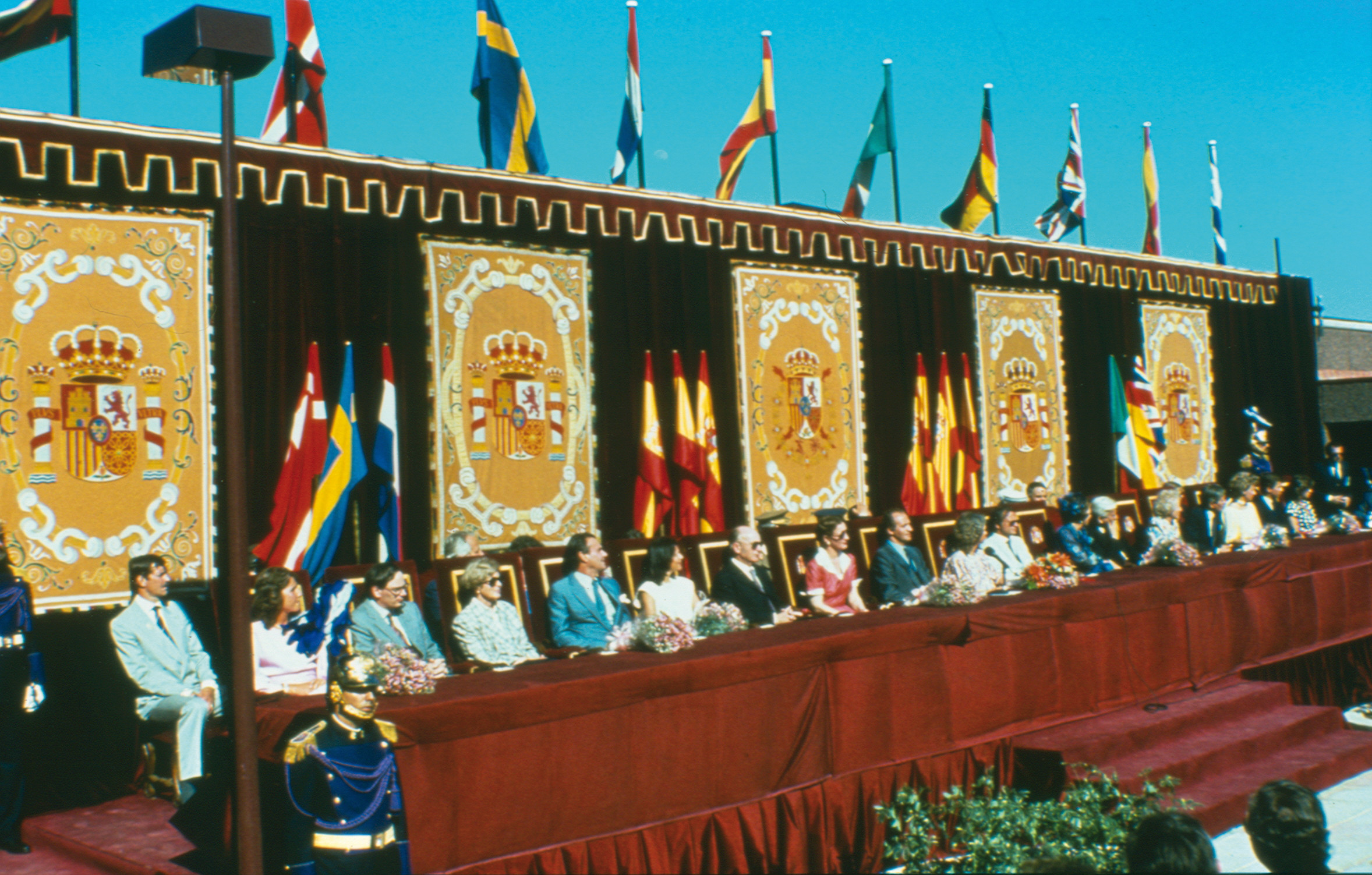
The ‘80s is the decade of administrative consolidation of the IAC and its International Observatories. After a legal and administrative study of the IAC and a scientific audit we managed to obtain autonomy and a specific legal status for the Institute. In 1982 the Spanish Parliament unanimously approved the Royal Legal Decree (7/1982 of April 30th) by which the IAC was declared administratively as a “Public Consortium” depending on the National Administration, the Autonomous Community of the Canaries, the University of La Laguna, and the CSIC. IN 1983 the postgraduate school of the IAC began its operation, including its own positions of “resident astrophysicists”
New scientific institutions and countries decide to install their best telescopes in the IAC’s Observatories, and agreements were negotiated by which Germany (1983), Finland (1886), and France (1988) become members.
In 1985 the Official Inauguration of the Instituto de Astrofísica de Canarias and the Teide and Roque de los Muchachos Observatories took place, with monarchs and members of the Royal Families of five countries (Spain, Denmark, the United Kingdom, The Netherlands, and Sweden) and two other heads of state (Germany and Ireland). In addition twelve ministers from European countries were present, as well as a distinguished representation of the scientific community, headed by five Nobel Laureates.
In 1987 the Anglo-Dutch “William Herschel” telescope of 4.2 metre diameter was inaugurated, at the time the largest telescope in the Canaries, and in 1989 the nordic telescope NOT, of 2.56 m, both at the Roque de los Muchachos Observatory.
The IAC begins to gain experience with scientific payloads for sounding rockets by producing instruments for upper atmosphere studies following this with satellite instrumentation. We participate with a leading role in the design and construction of ISOPHOT-S, a spectrograph for the ISO (Infrared Space Observatory) satellite of ESA, and start to participate in the VIRGO and GOLF instruments for the SOHÖ satellite.
The IAC designs instruments not only for astronomy, but also stimulates the technological development of the surrounding community. In order to spin off and commercialize technological products from the IAC in 1988 the company “GALILEO, Engineering and Services S.A.” was formed.
Also in 1988 the “Law for the Protection of the Astronomical Quality of the IAC Observatories” (Law 31/1988 of October 31st) was passed, whereby the mountain tops of the islands of Tenerife and La Palma were turned into a world astronomical reserve. We attracted more and more international meetings and conferences in astrophysics, among which we note the European Meeting of the International Astronomical Union (IAU) celebrated in Tenerife in 1989.
In the same year the first “Winter School” of the IAC is celebrated, with the idea of creating as an institution an international school of Astrophysics with the name “Canary Islands Winter School of Astrophysics”. The object is to ensure, during a period of two weeks, that the best experts in a field of major scientific interest (different each year) live together with doctoral students from all over the world who are working in the field.
During the ‘80s the IAC’s outreach effort increases; there are many open days for the public at the observatories, the researchers give large numbers of popular lectures, and even organize astronomical “shows”. A very popular event was the “Star Party” which the IAC organized to celebrate the proximity of Halley’s Comet in 1986, and which brought together on March 15th, on the beach of Las Teresitas in Tenerife, some sixty thousand people. As well as this, in order to help the astrophysical observations of this well known comet, all the public lighting on La Palma was switched off.

The decade of the 90’s is the decade of scientific and technical consolidation of the IAC, which is held in higher international esteem, and is increasingly popular in the Canaries and in the rest of Spain. The IAC continues to sign agreements with scientific institutions wanting to install instruments in the Canaries, and their observatories become established as the European Northern Observatory.
In 1991 the Consiglio per le Ricerche Astronomiche decides to install the Italian National Telescope “Galileo” of 3.5m in the Roque de los Muchachos Observatory, going back on its previous decision to install it in Hawaii. In 1994 the European Space Agency (ESA) signs an agreement with the IAC to install at the Teide Observatory a telescope dedicated to optical telecommunications with satellites, with the possibility to use it also for astronomical purposes and to keep track of space debris.
The achievements of the IAC in cultural diffusion and outreach become more important, with a private foundation which sets up an official course of astronomy for high school and primary school teachers. A small visitors centre is organized at the Teide Observatory. The IAC has a presence in three pavilions of the Universal Expo in Seville in 1992 and in 1993 a modern interactive museum is opened next to the IAC, the Museum of Science and the Cosmos of the Cabildo of Tenerife. In the same year Prince Felipe, a great enthusiast of astronomy, visits us for the first time.
The Canaries, gradually becomes a regular meeting place for the international scientific community, stimulated by the astrophysicists. In 1990 the main space agencies (the American agency NASA, the European ESA, the Japanese ISAS, and the Russian INTERCOSMOS) celebrate a meeting in the islands. IN 1992 the OCDE (Organization for Economic Growth and Development) brings its committee of experts, the “Megascience Forum” to meet in Tenerife- The IAC continues to push technological development in the Canaries and sets up an Office of Technology Transfer.
The Government of the Canaries and the Spanish national Government became interested in building a large telescope with diameter greater than 8m. In 1994, with public funding, a public company (GRANTECAN S.A.) was set up, to help the IAC define the telescope, to study its viability and its construction. As well as the obvious scientific objective there is a well defined economic and technological plan: to use this major project to stimulate technology transfer to Spanish industry, and to generate business infrastructure in the Canaries stressing advanced technology.
In January 1995 the IAC organizes, together with the BBV Foundation, an international meeting lasting one week between major international experts in astrophysics and young researchers: “Key Problems in Astronomy” Some of the unsolved problems which future generations must tackle were discussed. Cambridge University Press publish a book about the meeting, and the IAC publishes the videos of the discussions.
In 1995 the ISO and SOHO satellites, in which the IAC led the Spanish participation in the construction of the instruments ISOPHOT-S, VIRGO, and GOLF, are successfully launched by NASA and ESA,
Important scientific discoveries in which IAC astrophysicists take part are made at an increasing rate. In 1992 the first stellar mass black hole in our Galaxy was found, in 1994 the anisotropies in the cosmic microwave background radiation were detected and in 1995 the first “brown dwarf” Teide 1, was detected in the Pleiades.
In February 1996 the Governing Council of the IAC, with all the reports in favour, and with the agreement of the participation of the Spanish government and of the Autonomous Region of the Canaries, gives the green light to the construction of the “Great Telescope”, with a segmented mirror of 10m diameter, with the guarantee of at least 50% of the funding for the project.
In June 1996 the King and Queen of Spain, accompanied by ministers and other authorities and by distinguished scientists, inaugurate new telescopic and instrumental installations in the Roque de los Muchachos and Teide Observatories, among which we pick out the Italian National “Galileo” Telescope (TNG) and the Franco-Italian solar telescope “THEMIS”.
In 1997 the first light of the “Dutch Open Telescope” (DOT) at the Roque de los Muchachos Observatory was attended by His Royal Highness Willem Alexander, the Prince of Orange. At the end of the year His Majesty the Prince of Asturias, Astrophysicist of Honour of the IAC, paid a visit to the IAC Headquarters in La Laguna, for the second time.
In collaboration with the Faculty of Medicine of the University of La Laguna a patented prototype was developed of a virtual acoustic space for medical application to blind people. In 1998, with the X Canary Islands Winter School of Astrophysics, dedicated to “Globular Clusters” this annual school was consolidated by the celebration of its 10th anniversary.Also in 1998 the IAC organized a further six scientific meetings, among them three Euroconferences, two international conferences, and the III Scientific Meeting of the Spanish Astronomical Society.